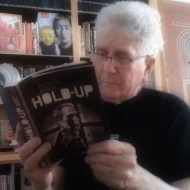Speaker: Danfeng Wu (MIT)
Title: Can there be a unified meaning for but?
Time: Thursday, May 21th, 12:30pm - 2pm
Abstract: In English, but as a coordinator has at least three different uses/meanings: counterexpectation, semantic opposition, and correction (Toosarvandani 2014). Each example below illustrates one use:
(1) a. Max eats chard but hates it. [Counterexpectation]
b. Max eats chard, but not spinach. [Semantic opposition]
c. Max doesn’t eat chard, but spinach. [Correction] (Based on Toosarvandani 2013:828)
Counterexpectational but has an implication that generally, if the first conjunct holds, the second conjunct does not. This expectation is denied by the second conjunct. Semantic opposition but and corrective but don’t have this expectation that is denied. Semantic opposition but requires negation in the second conjunct (or antonyms in the conjuncts), whereas corrective but requires negation in the first conjunct.
Some languages distinguish these different uses of the connector lexically, e.g. German, Russian, Spanish, and even English (e.g.,whereas is only used for semantic opposition), but other languages collapse some uses into one lexical item, and also, these different uses have some similarity in meaning. Therefore, there has been an effort to unify the meanings of these buts (e.g. Toosarvandani 2014).
In this work in progress, I present a novel observation that semantic opposition requires “parallel” conjuncts, whereas counterexpectation doesn’t. For example, (2) is only good under the counterexpectational reading, which requires a context that brings out the expectation that generally, if they hired someone who speaks German, that person must also speak French (say they were hiring in a bilingual region in Switzerland), so only counterexpectational but is good in (2), but not semantic opposition but. This point is shown by the oddness of whereas, which only has the semantic opposition meaning.
(2) They hired someone who speaks German yesterday, but/#whereas she does not speak French.
We can improve the semantic opposition reading by making the conjuncts more “parallel”:
(3) a. They hired someone who speaks German yesterday, but/whereas they didn’t hire someone who speaks French yesterday.
b. The person they hired speaks German, but/whereas she does not speak French.
Then I will present two proposals for the meaning of semantic opposition but, Jasinskaja & Zeevat (2009) and Toosarvandani (2014), both of which make reference to answers to the question-under-discussion (QUD) (Roberts 1996/2012). I will show that neither proposal seems to be able to account for the requirement of “parallel” conjuncts by a semantic opposition connector. In order to account for this fact, I propose that semantic opposition connectors require there to be a QUD such that both conjuncts are direct answers to this QUD. In other words, the conjuncts should be propositions contained in the QUD. The semantic opposition reading of (2) is odd because we cannot find a QUD that contains both conjuncts as its propositions. (3a&b) are fine because they don’t have this issue. With this new proposal in mind, I will explore whether it is still possible to unify the various uses of but in meaning.
